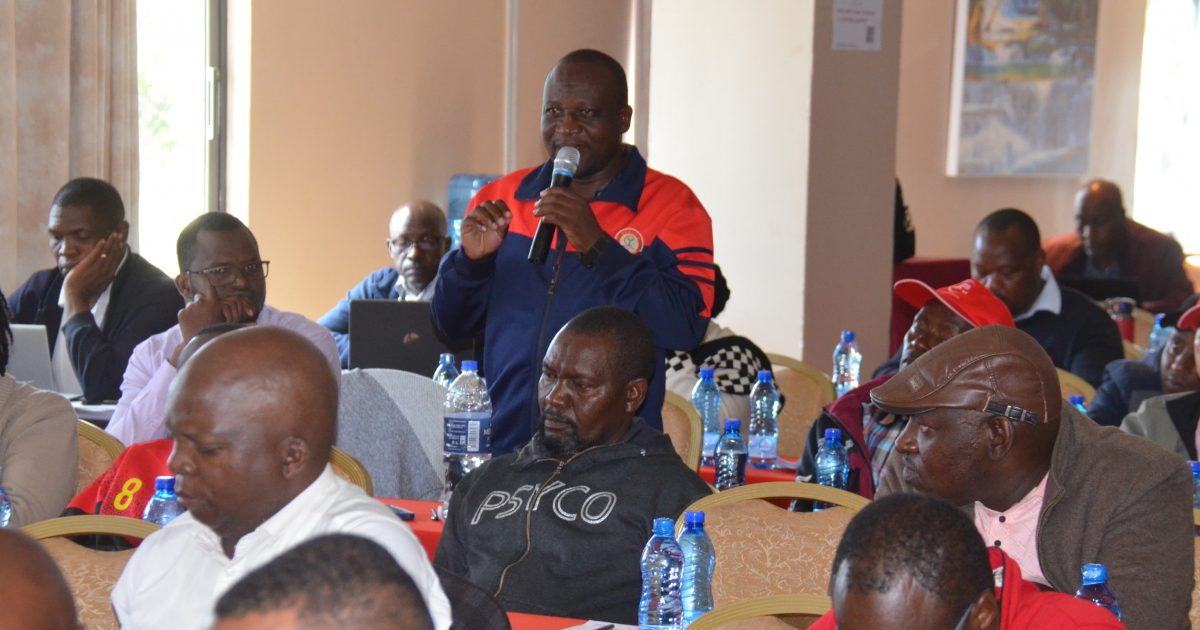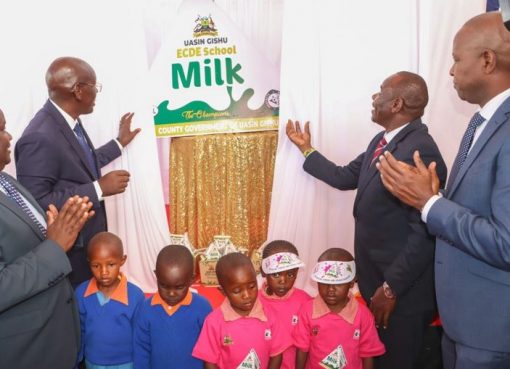The government through the State Department of Livestock is set to publicize a report from a feasibility study on pasture and fodder value chain that will give solutions on how pasture and fodder can be made available in the 21 Arid and Semi-arid (ASAL) counties.
The feasibility study was done through a consultancy firm and a draft report presented to stakeholders for validation and is expected to guide livestock owners and stakeholders on how to fix the existing challenges since pasture and fodder production has potential to increase livestock production.
The livestock sector contributes to 12% to the GDP and employs more than 50% of the agricultural labor force with this report ensuring easy access to pasture and fodder for counties in need and how to commercialize it to improve the standard of living in the ASAL counties.
The Director for Livestock production from the Ministry of Agriculture, Bishar Elmi made the remarks during a two-day stakeholder validation of the feasibility study on pasture and fodder value chain in ASAL counties at a Machakos hotel.
He said that the purpose of the study was to provide data and evidence that would encourage investment through the government or Private Public Partnerships (PPP), which would help increase income and improve resilience and sustainability of livelihoods in the ASALs.
Bishar emphasized on the government’s commitment on developing the livestock sector by addressing the issues affecting pasture and fodder value chain which are critical for improving feed and nutrition security while enhancing sustainable livestock production in the ASAL regions.
“We want the report to guide us on how we are going to fix feed challenges in our country and advise us on how to commercialize pasture and fodder in the 21 ASAL counties,” said Bishar.
The Livestock Director acknowledged the draft report that was approved by the participants with several changes that they had suggested to be included in the report awaiting implementation.
According to Dr. Stanley Mutua the head of livestock feed at State Department for Livestock, they initiated the feasibility study after a research was done between 2021 and 2022 where 2.5 million livestock was lost due to drought and out of that number 90 percent died due to lack of food and water.
Mutua disclosed that there is a 60 percent feed deficit that is threatening livestock production and economic growth, thus demanding urgent action from policy makers and stakeholders such as land reforms, standardizing feed regulations and enhancing extension services.
He noted that they also came up with project DRIVE De-risking inclusion and value enhancement project that was to assist in adapting to climate change by giving livestock insurance to pastoralists meant to purchase feeds for feeding livestock and linking them to various markets.
It is in this context that they decided to do a feasibility study that will give them the current status of pasture and fodder production, challenges experienced, access the production systems, analyse the marketing dynamics and way forward in the 21 ASAL counties.
Mutua added that several stakeholders are involved in the validation of the feasibility study such as County representatives from the 21 ASAL counties, private sector, farmers, seed producers and ASAL strategic partners.
He disclosed that the study led to several findings such as unmet demand for pasture and fodder which mostly attributed to underproduction and inadequate storage infrastructure.
The head of livestock feeds pointed out that although there are excess feeds during rainy seasons, farmers lacked adequate storage facilities that will store feeds to be used during the dry season.
“Lack of awareness and water scarcity have been limiting pasture and fodder production for livestock, which has led to land degradation in terms of soil fertility and inadequate land availability that were hindering growth and production of livestock feeds,” said Dr Mutua.
There was also a challenge of unstructured markets with farmers preferring free gazing as they migrate in search of pastures and only purchase pasture as last resort whereby livestock would already be dying.
Dr Mutua revealed that there were several gaps and emerging issues that were identified in the study such as weak collaboration among stakeholders, national policies not fully aligned with the county specific needs and also lack of reservoirs and insufficient agricultural mechanization access.
However, it was also discovered that through interviews with county experts, local governments were encouraging feed producers to form cooperatives where they will be better organized and access a wider market for fodder and pasture.
Counties and other stakeholders through the report were encouraged to adopt drought resistant pasture and fodder species through subsidized seed and awareness campaigns.
The report recommended they should develop frameworks that will unite several stakeholders, promote county initiatives that will match with national policies and also ensure equitable allocation of resources such as tractors while increasing funding for monitoring and training.
The CECM Agriculture Livestock and Cooperative Development Laikipia County and head of livestock caucus leadership in ASAL counties Denis Kasoo reiterated that the report would be a game changer in increasing access to quality animal feeds which is the only way to increase livestock production and eventually increase the GDP.
Kasoo acknowledged the importance of farmers and efforts to involve them as beneficiaries of the study and how as County leaders they intend to reach the farmers who are in the grassroots through extension services and enlighten them on the way forward on producing quality fodder for their livestock.
“Quality livestock feed will increase the quality of milk and meat in the country and farmers will be the main beneficiaries of the report once publicized,” said Kasoo.
By Anne Kangero




